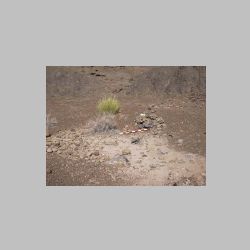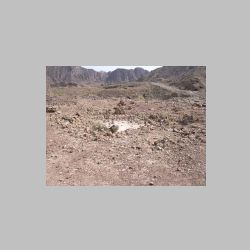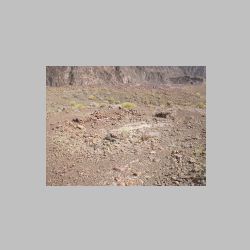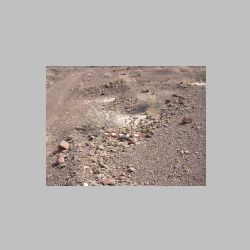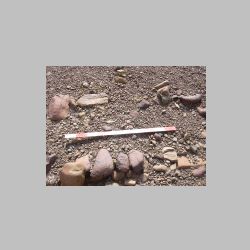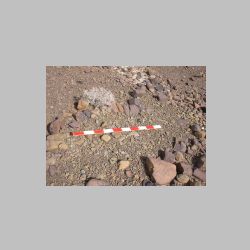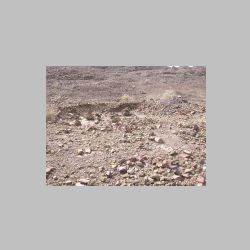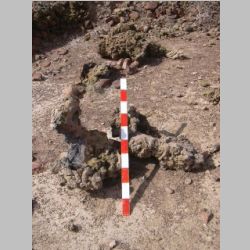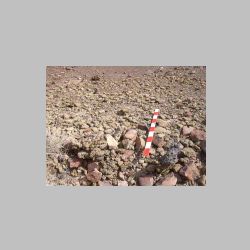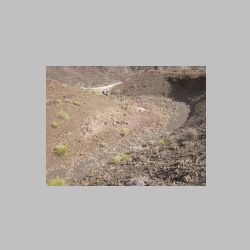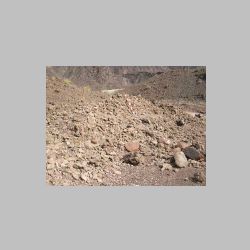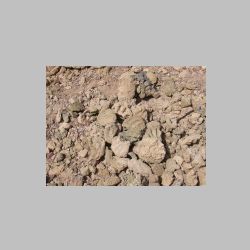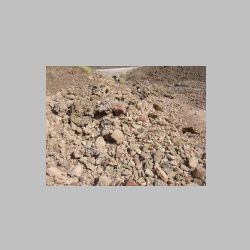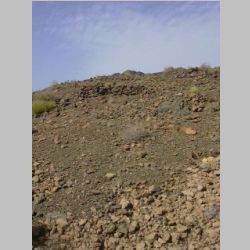Copper smelters of Wadi Khutwah
Copper smelters of Wadi Khutwah
Numerous historical accounts record Magan or Makkan as the source of copper that moved from what is now the Oman peninsula to Mesopotamia and beyond. While there is evidence of copper smelting on an industrial scale in places such as Wadi Jizzi, it is increasingly evident that smelting was a cottage industry in oases along the foothills of the Hajjar mountains.
In almost every oasis the ENHG has visited, copper smelters have been found. At Subaitah, for example, a smelter was eventually located above the fallaj, a few hundred meters upstream from the settlement area. At Khutwah, smelters are found on both sides of the gorges. At Nuway, a collection of as many as 10 smelters were found to accompany a smelter on the edge of Wadi Sharm.
We have established that the smelters required three components: clay to form the bricks, each brick imprinted with the hand of its maker; charcoal in huge quantities; copper ore. To date we have identified clay reserves and must presume the territory was more heavily forested. Where the copper ore was mined remains a mystery, other than the mines observed in Wadi Jizzi.
Each smelter also appears to have been constructed a short distance from a fallaj or stream.
The assumption is that copper smelting was a cottage industry carried out by the community during the winter season when farming activity was at a slow pace. The copper, collected and shaped into small ingots, was likely transported out of the oasis by donkey and perhaps by camel caravan to the Sohar coast. It is unlikely the copper moved north or west to the Arabian Gulf coast because the trip would have been considerably longer and more difficult compared to the trek downhill through Wadi Jizzi to the Indian Ocean coast.
What is not know is precisely when these copper smelters were in operation as there were, most agree, three distinct copper smelting periods: the most recent shortly after the arrival is Islam, one in the first millennium, the oldest in the second or perhaps third millennium.
Slag tested from one of the Khutwah smelters confirmed the absense of copper which is what should happen if the smelter is efficient; the slag did contain other minerals.
Whether any of the copper was later combined with tin to form bronze in any of the area smelters is unknown. The supposition is that the farmers were only interested in producing raw copper and would leave the conversion to bronze and the shaping of copper into weapons and implements to experts elsewhere.
Wadi Khutwah also has what is believed to be a copper ore roasting pit. This is located near Sultan's Oasis upstream from the main Khutwah oasis. For photographs of the supposed roasting pit, click here.
For photographs of some bricks and copper ore, click here.
For numerous links to articles on the internet relating to ancient smelting processes, click here.
